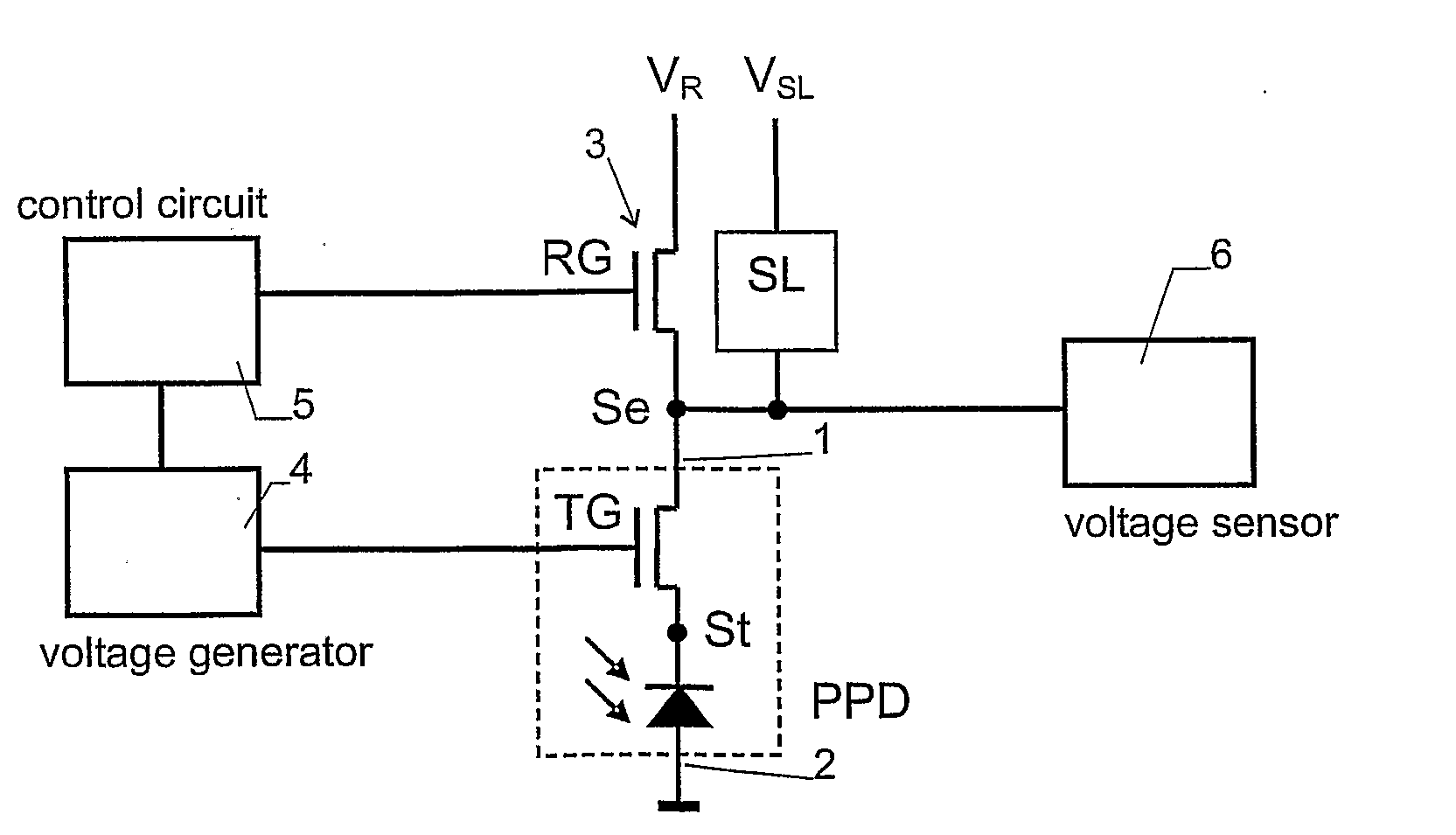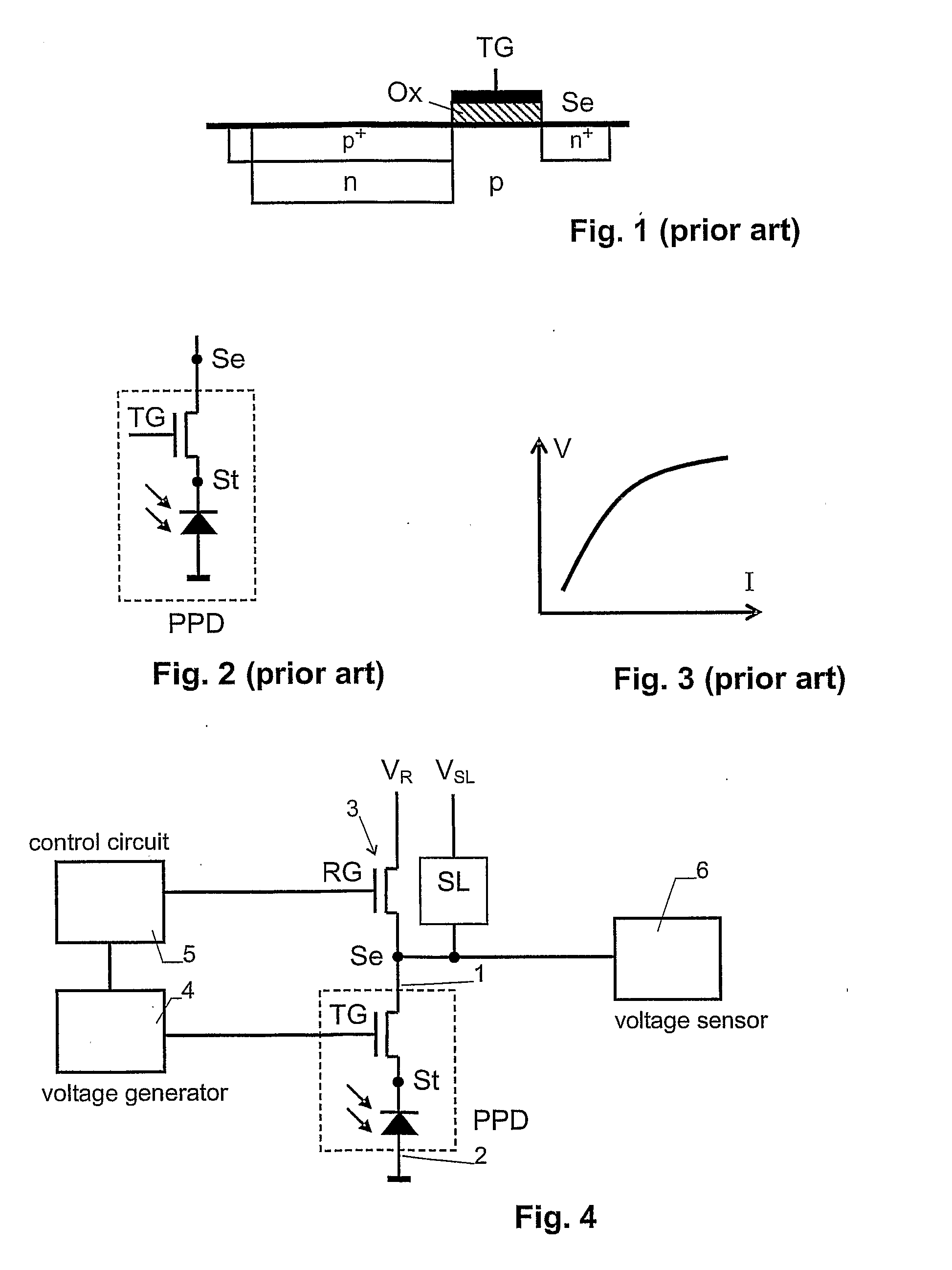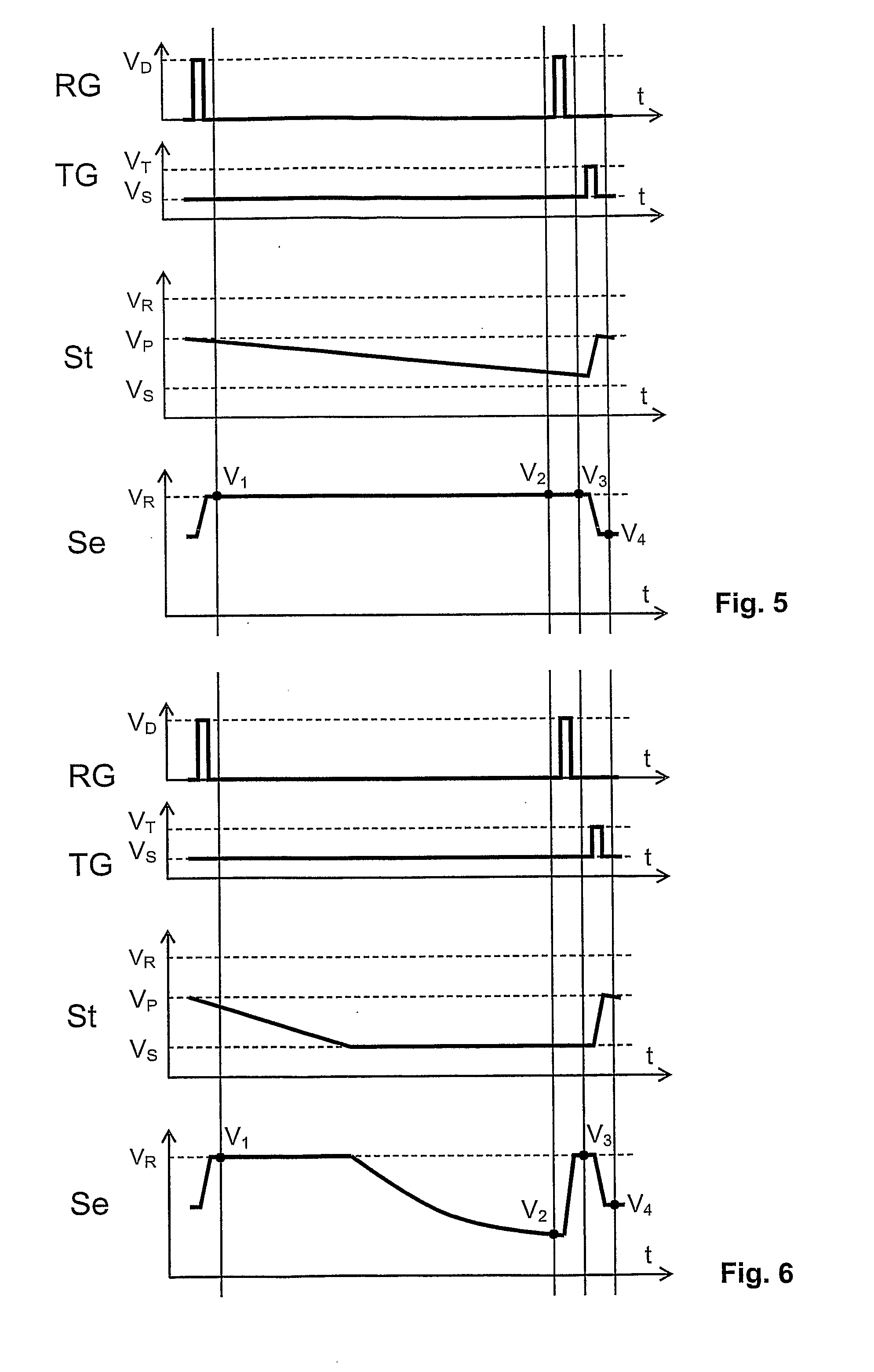Photo Sensor With Pinned Photodiode and Sub-Linear Response
- Summary
- Abstract
- Description
- Claims
- Application Information
AI Technical Summary
Benefits of technology
Problems solved by technology
Method used
Image
Examples
Embodiment Construction
[0044]Definition: In a strict sense, a sub-linear function is a function whose second derivative is always negative (convex curve), while a super-linear function is a function whose second derivative is always positive (concave curve). In the present context, though, a device is considered to be sub-linear (or super-linear, respectively) if the second derivative of its voltage-current (current-voltage) characteristic is negative (positive) only over a substantial part of its operating range and zero elsewhere. However, a sub-linear (super-linear) behavior in the strict sense is advantageous.
[0045]The basic operation of the photo sensor is illustrated by reference to FIGS. 4, 5 and 6.
[0046]As can be seen from FIG. 4, the photo sensor comprises a pinned photodiode PPD according to prior art having a first terminal 1 (photocharge sensing node), a second terminal 2 (anode) and a transfer gate TG. First terminal 1 is connected to the buried cathode of the PD through the transfer gate TG....
PUM
 Login to View More
Login to View More Abstract
Description
Claims
Application Information
 Login to View More
Login to View More - R&D
- Intellectual Property
- Life Sciences
- Materials
- Tech Scout
- Unparalleled Data Quality
- Higher Quality Content
- 60% Fewer Hallucinations
Browse by: Latest US Patents, China's latest patents, Technical Efficacy Thesaurus, Application Domain, Technology Topic, Popular Technical Reports.
© 2025 PatSnap. All rights reserved.Legal|Privacy policy|Modern Slavery Act Transparency Statement|Sitemap|About US| Contact US: help@patsnap.com



